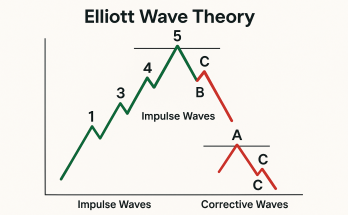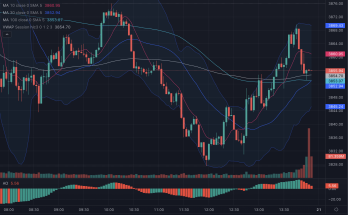The Options Wheel Strategy is one of the most popular approaches among options traders looking to create consistent income with defined risk. It’s a systematic way to sell options on stocks or ETFs you’re comfortable owning, while collecting premium along the way. Whether you’re an experienced trader or a long-term investor seeking extra yield, the Wheel can be a powerful addition to your portfolio.
What Is the Options Wheel Strategy?
At its core, the Wheel involves selling cash-secured puts to potentially buy stock at a discount and, once assigned, selling covered calls on that stock to generate ongoing income. It’s called a “wheel” because the process repeats in a cycle, continuously spinning as long as you manage the positions properly.
Here’s how it works in three main phases:
- Sell a Cash-Secured Put
- Choose a stock or ETF you’d be happy to own long-term.
- Sell an out-of-the-money (OTM) put option—typically with 30–45 days until expiration.
- Collect the premium upfront while setting aside enough cash to buy 100 shares at the strike price.
- If the option expires worthless, you keep the premium and can repeat the process.
- If the stock drops and the put is assigned, you buy 100 shares at the strike—usually at a discount to the current price.
- Sell a Covered Call
- Once you own the shares, sell a covered call (an OTM call option) against your position.
- This generates more premium income while obligating you to sell your shares if the price rises above your call strike.
- If the call expires worthless, you keep both the shares and the premium, and you can sell another call.
- If the shares are called away, you realize your gains from the appreciation plus all the collected premiums.
- Repeat the Wheel
- After your shares are called away, you return to step one: sell another cash-secured put.
- This continuous cycle can compound income and smooth out returns over time.
Why Traders Use the Wheel Strategy
- Steady Income Generation: You collect option premiums at each stage—both from puts and calls.
- Buy Stocks at a Discount: If assigned, you’re purchasing shares below current market value.
- Defined Risk: Your risk is limited to the cost of buying the underlying shares.
- Flexibility: You can adjust strike prices and expirations based on your market outlook and risk tolerance.
Key Considerations and Risks
While the Wheel Strategy offers many advantages, it’s not risk-free:
- Downside Exposure: If the stock falls significantly after assignment, you still own it and face unrealized losses.
- Opportunity Cost: Your capital may be tied up in cash or shares for extended periods.
- Low Volatility = Low Premiums: In quiet markets, the income potential decreases as option premiums shrink.
- Stock Selection Matters: The Wheel works best with liquid, fundamentally strong stocks that you’re comfortable holding long term.
Example of the Wheel in Action
Imagine you want to use the Wheel on Apple (AAPL), currently trading at $200:
- Sell a $190 put expiring in 30 days for a $2.00 premium ($200 per contract).
- If AAPL stays above $190, the option expires worthless—you keep the $200.
- If AAPL drops below $190, you buy 100 shares for $19,000.
- Now that you own the shares, sell a $205 call for a $2.50 premium.
- If AAPL stays below $205, you keep your shares and premium.
- If AAPL rises above $205, you sell the shares for $20,500, locking in a $1,500 gain plus $450 in total premium income.
- Repeat the process with new puts to start the next wheel cycle.
The Wheel Strategy vs. Simply Owning Stock
Owning a stock alone relies on price appreciation for profit. The Wheel, however, adds consistent income streams through option premiums, even in sideways markets. Over time, these collected premiums can significantly boost returns or offset losses during downturns.
Bottom Line
The Options Wheel Strategy is a disciplined, rules-based approach that blends income generation with long-term investing. By cycling between selling puts and calls, you can generate cash flow, manage risk, and potentially acquire quality stocks at attractive prices.
However, it’s essential to manage positions carefully, avoid chasing high premiums on volatile stocks, and understand assignment risk. When executed with patience and discipline, the Wheel can become a reliable tool for growing wealth steadily over time.
WealthLed, Copyright 2020 - 2025, All Rights Reserved. WealthLed does not offer any personal financial advice or recommend the purchase or sale of any security or investment for any specific individual. Nothing in this article should be considered personalized investment advice and is for educational purposes only. Additionally, WealthLed has advertising relationships with some of the offers listed on this website. We may receive compensation when you click on links to those products or services.



